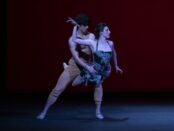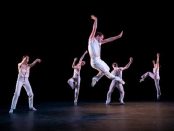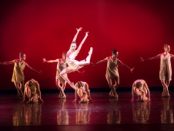Illinoise
While "Illinoise" does not seem bigger than its individual parts nor transcend them, it is both satisfying and moving. Peck’s inventive and derivative choreography at the same time seems to pay homage to his teachers and sources but also is in his own style. Some will find "Illinoise" an emotional experience; others will be impressed by the vigor and high spirits of the dancers and singers. Several of the dancers should be come much better known through their roles in this work. Last but not least, Sufjan Stevens’ 2005 score is remarkable in its continued vitality after all these years. [more]










